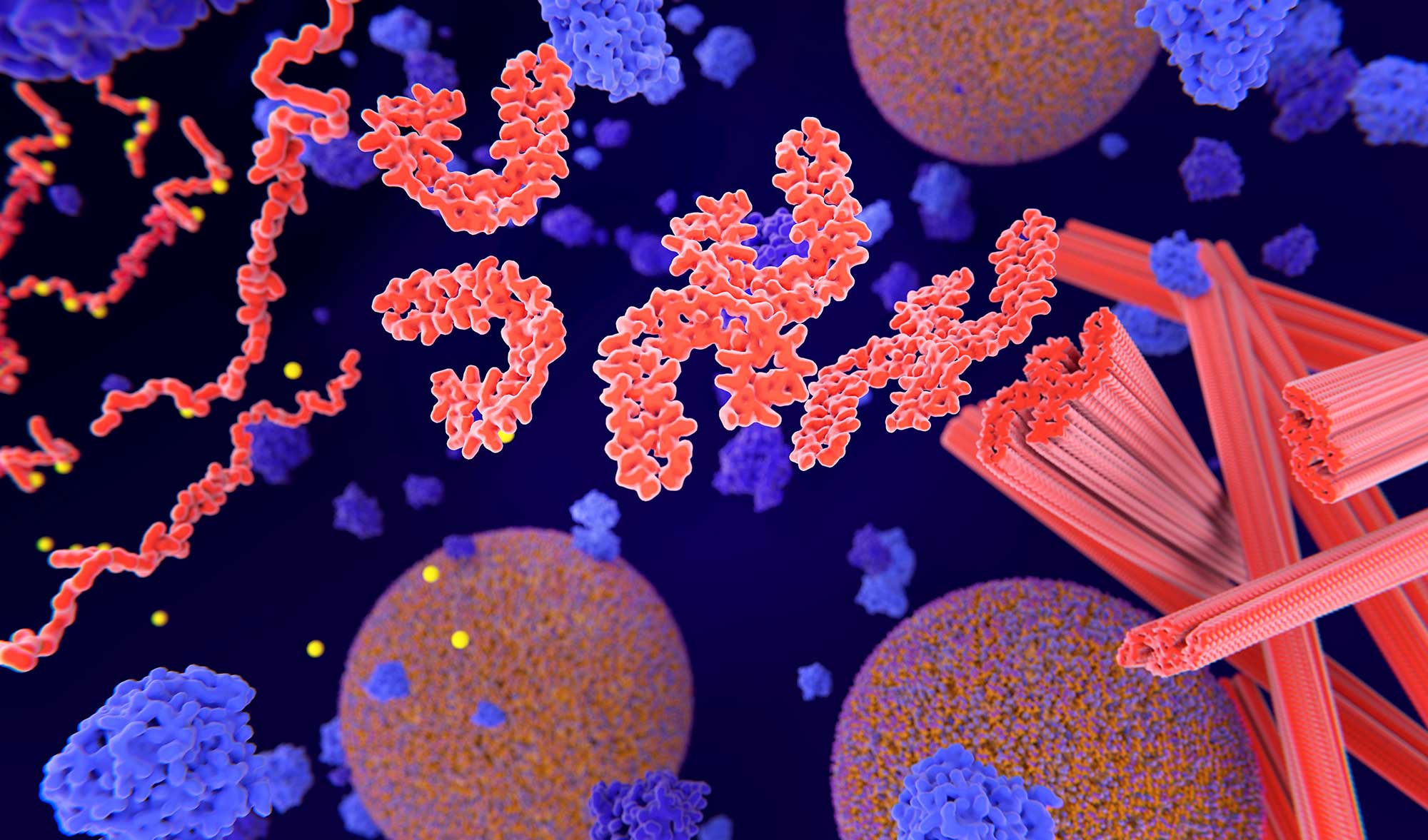LifeArc is supporting MRC scientists who want to see their discoveries go from bench to bedside
Age-related dementia is a leading cause of disability and dependency among older people and in addition to the personal toll, there are significant social and economic costs. Alzheimer’s disease may contribute to between 60% and 70% of dementia cases. It remains an unmet therapeutic need because at present, we have no disease-modifying treatment to prevent or halt the course of this condition.
Now, a successful relationship between an MRC laboratory, two universities, and a global pharmaceutical company may result in the development of novel drugs against Alzheimer’s disease and other age-related dementias, with huge potential benefits.
Novel assay for a key protein
Intracellular accumulation of the cytoplasmic protein, tau, is thought to be associated with Alzheimer’s disease and other dementias such as supranuclear palsy and chronic traumatic encephalopathy.
Previous research, led by Dr Michel Goedert at the MRC Laboratory of Molecular Biology (LMB), has shown that misfolded tau can spread between cells, inducing a ‘prion-like’ propagation of the misfolded state in recipient cells.
A collaboration between the labs of Dr Leo James at the LMB and Dr Will McEwan at the University of Cambridge led to the development of a novel and sensitive tau seeding assay. In an iterative process, molecules can be screened using this assay to identify and design novel chemical entities that can inhibit tau seeding. Further in vitro and in vivo studies on these molecules are carried out to assess their characteristics. This work can ultimately lead to the identification of suitable lead molecules which can be taken forward in preclinical and clinical drug development.
This process of screening molecules using the assay, and then developing them for future therapeutic use, will be possible thanks to a collaborative effort with academic and commercial partners.
“Industry has resources and infrastructure that are lacking in academia, principally access to small molecule compound libraries, bespoke synthesis and medicinal chemistry.” Dr Leo James, MRC Laboratory of Molecular Biology
Working in harmony
To begin this collaboration, LifeArc assisted in establishing an agreement with the University of Dundee, under which the assay has been applied to screen more than 20,000 compounds and identify promising candidate chemotypes for further investigation.
In addition, after the University of Dundee secured participation and funding from Takeda as an industrial partner, LifeArc helped establish a collaboration agreement to develop pre-clinical candidate drugs that might inhibit tau seeding. These partners include the James lab at LMB, Dr William McEwan’s laboratory at the University of Cambridge and the University of Dundee’s Drug Discovery Unit.
These agreements had to ensure that the interests of the academic partners, and their freedom to research and publish, were protected. At the same time, the commercial viability of the project also had to be safeguarded, so that any molecules identified could successfully be developed into therapeutic agents in the future. This balance can be difficult to achieve, and LifeArc has the expertise to facilitate a speedy conclusion of negotiations and secure equitable terms in agreements for academics and the MRC.
Going forward, the success of this project lies in the synergy between all partners. where each contributes their expertise and resources. The James and McEwan labs contribute the assay, mouse models and understanding of the fundamental biological processes underpinning Alzheimer’s disease and tau pathology. The University of Dundee contributes its medicinal chemistry expertise, and Takeda provides its industrial experience and a viable route to market.
References: Goedert M, Falcon B, Clavaguera F, Tolnay M. Prion-like mechanisms in the pathogenesis of tauopathies and synucleinopathies. Curr Neurol Neurosci Rep. 2014; 14(11):495.
McEwan WA, Falcon B, Vaysburd M, Clift D, Oblak AL, Ghetti B, Goedert M, James LC. Cytosolic Fc receptor TRIM21 inhibits seeded tau aggregation. Proc Natl Acad Sci USA. 2017;114(3):574-579.

